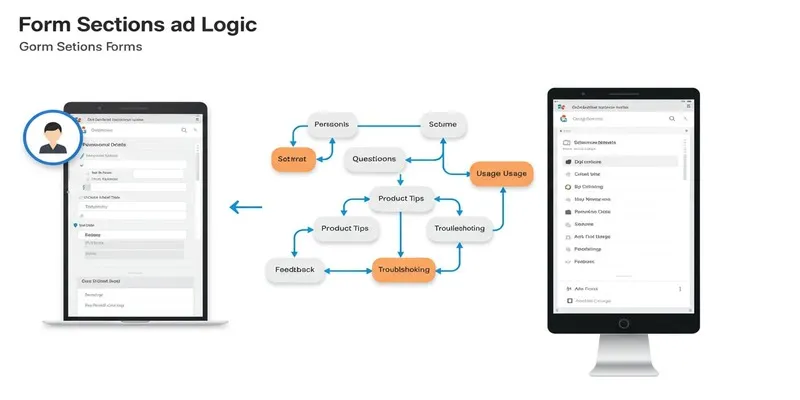Google SEO Beginner's Guide: How to Do Keyword Research for Foreign Trade Sites
Google SEO Beginner’s Guide: How to Do Keyword Research for Foreign Trade Sites
Recently, one of our business colleagues mentioned that many friends in the B2B foreign trade industry are increasingly interested in practical and foundational SEO knowledge, especially around how to select and deploy keywords for Google SEO. I thought: easy! Let’s make it happen.
After surveying many popular articles on keyword research, I noticed a trend—lots of theory, but little actionable detail. So in this post, we’ll get hands-on. We’ll use a real case: a solar street light manufacturer’s B2B site, to explain how to conduct effective keyword research.
1. Why Do Keyword Research?
Keyword selection determines whether your site ranks, gets seen by potential buyers, and attracts qualified leads. Poor keyword choices can delay rankings, hurt brand perception, and trap your new website in Google’s “sandbox.”
In plain English: keywords are the search terms we want our site to rank for. SEO is the process of optimizing our site so that it ranks higher for those terms.
When choosing keywords, ask:
- Are these terms what my target customers actually search for?
- Are they high-volume enough to be worth optimizing?
- Do they reflect commercial intent, like the customer is ready to buy?
2. Translation & Localization Are Crucial
For foreign trade websites, accurate translation and localization of keywords matter. B2B clients often use specific technical terms, so use language that reflects how professionals search.
Steps:
-
Check translation accuracy: Use Google Translate as a start, but validate with local search engines.
E.g., “solar street lights” (4,400 searches/year) is more common than “solar energy street lights” (880 searches/month). -
Research local expressions: Use tools like Google Trends or Keyword Planner to find alternative phrasings.
“Solar powered street lights” (1,900 searches/month) may also be relevant. -
Compare variants: Choose terms with high search volume but manageable keyword difficulty (KD).
E.g., “solar street lights” (KD 29) vs. “commercial solar street lights” (KD 11).
🛠 Recommended tools: Ahrefs, SEMrush (we’ll share a full tutorial on keyword data research soon).
3. Spy on Competitors’ Keywords
Your top competitors can reveal which keywords are working in the real world, especially for B2B buyers.
Steps:
-
Identify top competitors: Search “solar street lights manufacturer” on Google.
Sites like SEPCO Solar Lighting or Fonroche Lighting America may appear. -
Analyze their keywords: Look at titles, meta descriptions, and category pages.
Terms like “commercial solar LED lighting” or “solar light suppliers” are commonly used. -
Study site structure: Pay attention to pages like “Request a Quote” or “Distributor Partnership.”
These help you find high-intent B2B language.
📌 Note: Don’t try to outrank the giants right away. Competing against industry leaders or Amazon from the start will stall your SEO progress—new sites lack the domain authority and trust.
4. Understand Keyword Evaluation Criteria
Choose keywords by balancing three key factors:
-
Search Volume
- Use Google Keyword Planner or SEMrush.
- Aim for 100+ searches/month, but even low-volume B2B terms can be valuable if high-intent.
-
Keyword Difficulty (KD)
- Under 30 is generally manageable, but it depends on the niche.
- “Solar street lights” has KD 29—tough but possible in some markets.
-
Search Intent
- Types: Navigational, Informational, Commercial, Transactional.
- Focus on commercial (e.g. “commercial solar lights”) and transactional (e.g. “solar lights for sale”) keywords.
5. Practical Keyword Selection for New Sites
Now let’s get real. Most SEO tutorials don’t talk about this, but for new websites, keyword strategy must be different.
Here’s the issue: if your site has zero backlinks, no indexed pages in Google Search Console (GSC), and no domain authority (DA)—DO NOT try to rank for keywords like “solar street lights.” You’ll waste time and money.
Why? Google operates on a “trust threshold” for high-competition keywords. If your site doesn’t meet that threshold, it won’t even be shown in the results, no matter how good your content is.
🧠 Recommended Strategy for New Sites:
- Choose keywords with KD ≤ 15, or even ≤ 10 in highly competitive industries.
- Target long-tail, lower-volume phrases like:
- “commercial solar street lights for parking lots”
- “solar powered LED street light suppliers”
- “solar street light manufacturers USA”
Remember, SEO for B2B sites is a long-term game—and compound traffic from long-tail keywords can outperform top-volume terms.
Final Q&A Recap:
Q1: What if a keyword isn’t something the customer searches, but it’s still industry-related?
🅰 It can still help your site gain topical relevance and authority.
Q2: What if the search volume is low?
🅰 Long-tail keywords with low volume often bring highly qualified traffic—perfect for conversions.
Q3: Should I still optimize non-transactional keywords?
🅰 Absolutely. A healthy SEO strategy includes all types of intent—not just buying terms.
Related Articles

5 Key Reasons Why SEO Is a Must for Foreign Trade Companies—and the Real Benefits Explained

Rank Math vs. Yoast: A Detailed Comparison to Choose the Best SEO Plugin

Top Keyword Research Tools

Top Keyword Research Tools

Programmatic SEO: How Can You Increase Search Traffic Using No-Code Tools

Revolutionize Your SEO Strategy with the 9 Best Audit Tools in 2025

Boost Your Productivity: The 10 Best Google Docs Add-Ons You Need

How to Add, View, and Print Comments in Google Docs: A Step-by-Step Guide

How to Integrate Google Sheets with Mailchimp: A Step-by-Step Guide

A Comprehensive Guide to Create Form Sections and Logic in Google Forms

Resolving Google Classroom Submission Errors: Step-by-Step Guide

How to Automatically Save Gmail Attachments to a Google Drive Folder: A Complete Guide
Popular Articles

Convert SWF to MPG Easily: Online & Offline Methods That Work

How to Record Skype Calls Without Losing Quality: A Complete Guide

Step-by-Step Guide to Viewing and Saving Fortnite Replays

Watch Later in MKV: 8 Tools to Save HD Movies Instantly

The 9 Best AI Recruiting Tools

PicPlayPost Video Editor Review: Smart, Simple, and Creative

Top Methods to Convert and Crop Your Videos to GIFs

8 Apps to Help You Focus and Block Distractions in 2025

Top 8 Free Video Editors Reviewed and Compared in Detail

The Best Free Tools to Convert DAT Files into WMV Format

Framer vs. Webflow: The Ultimate Comparison for Website Builders

 mww2
mww2